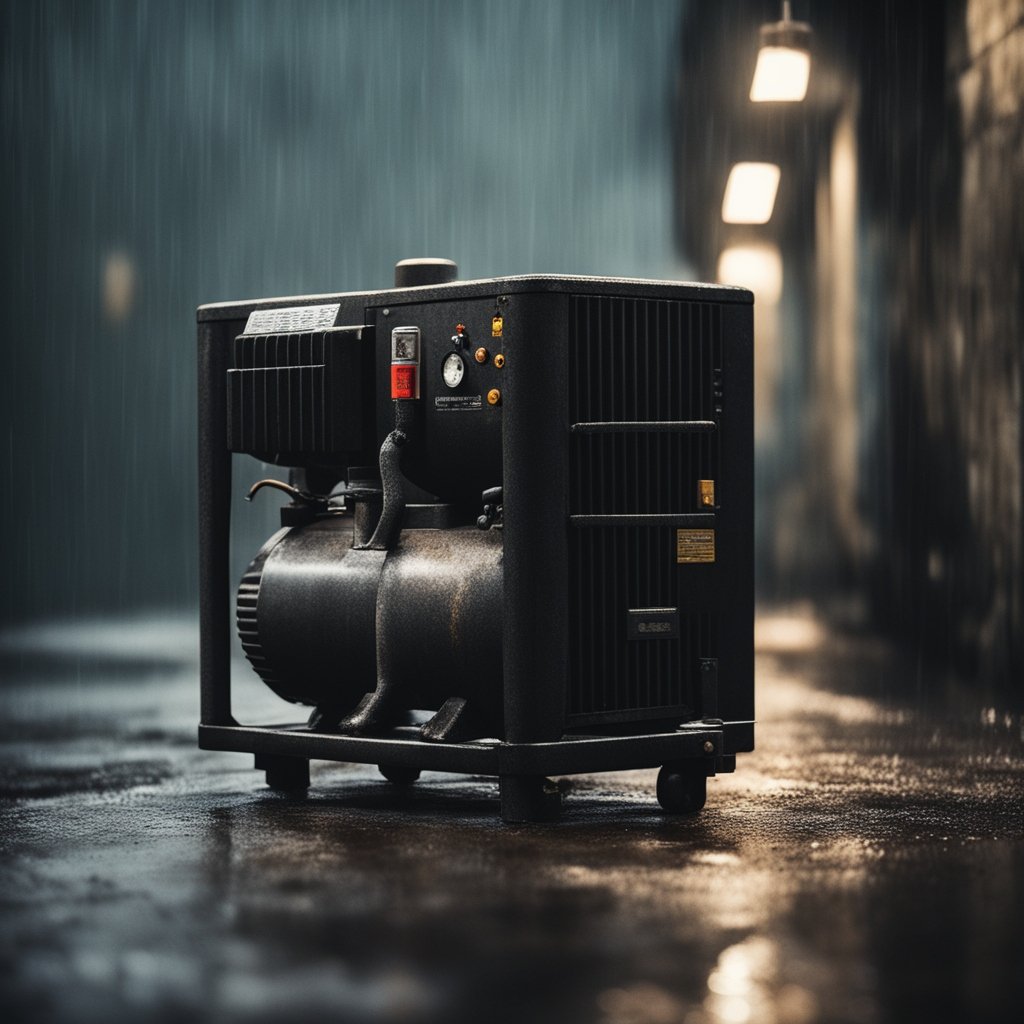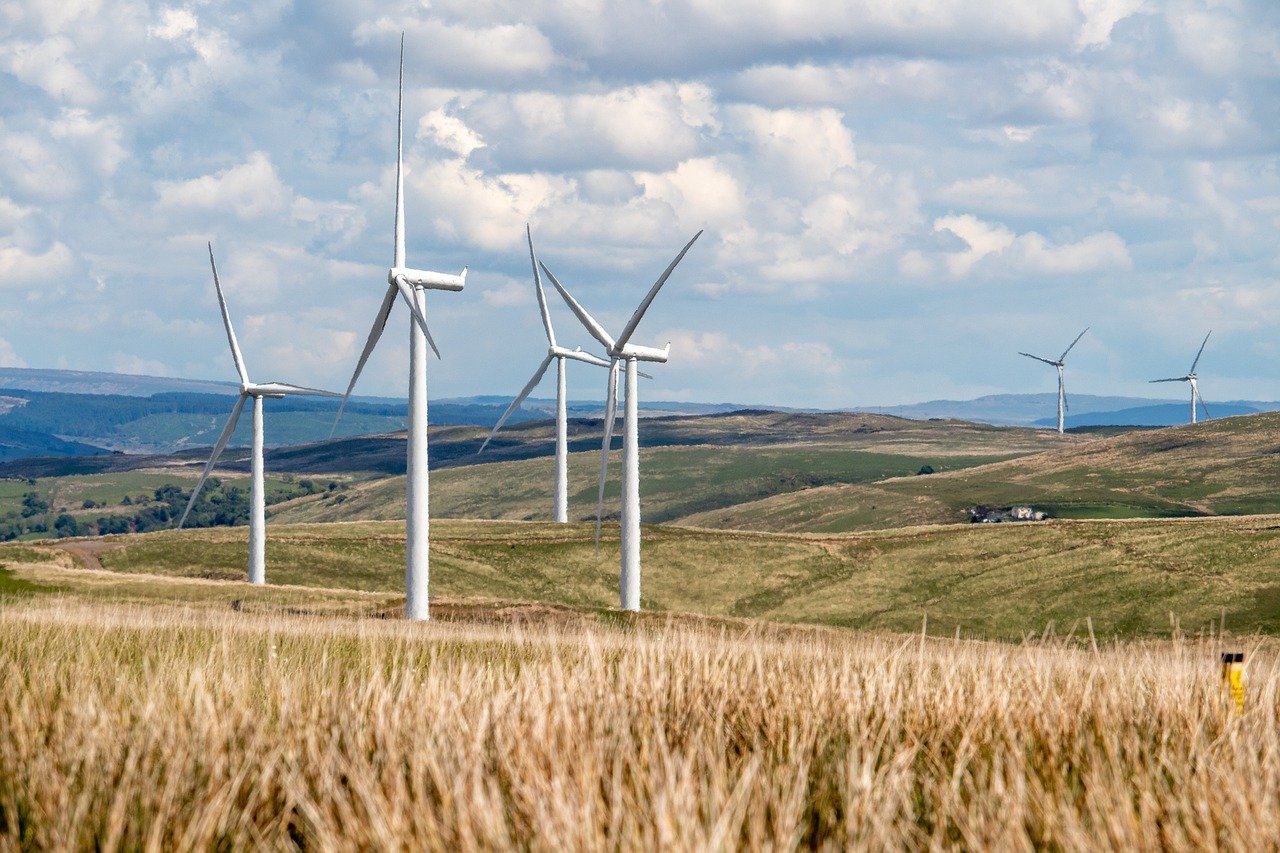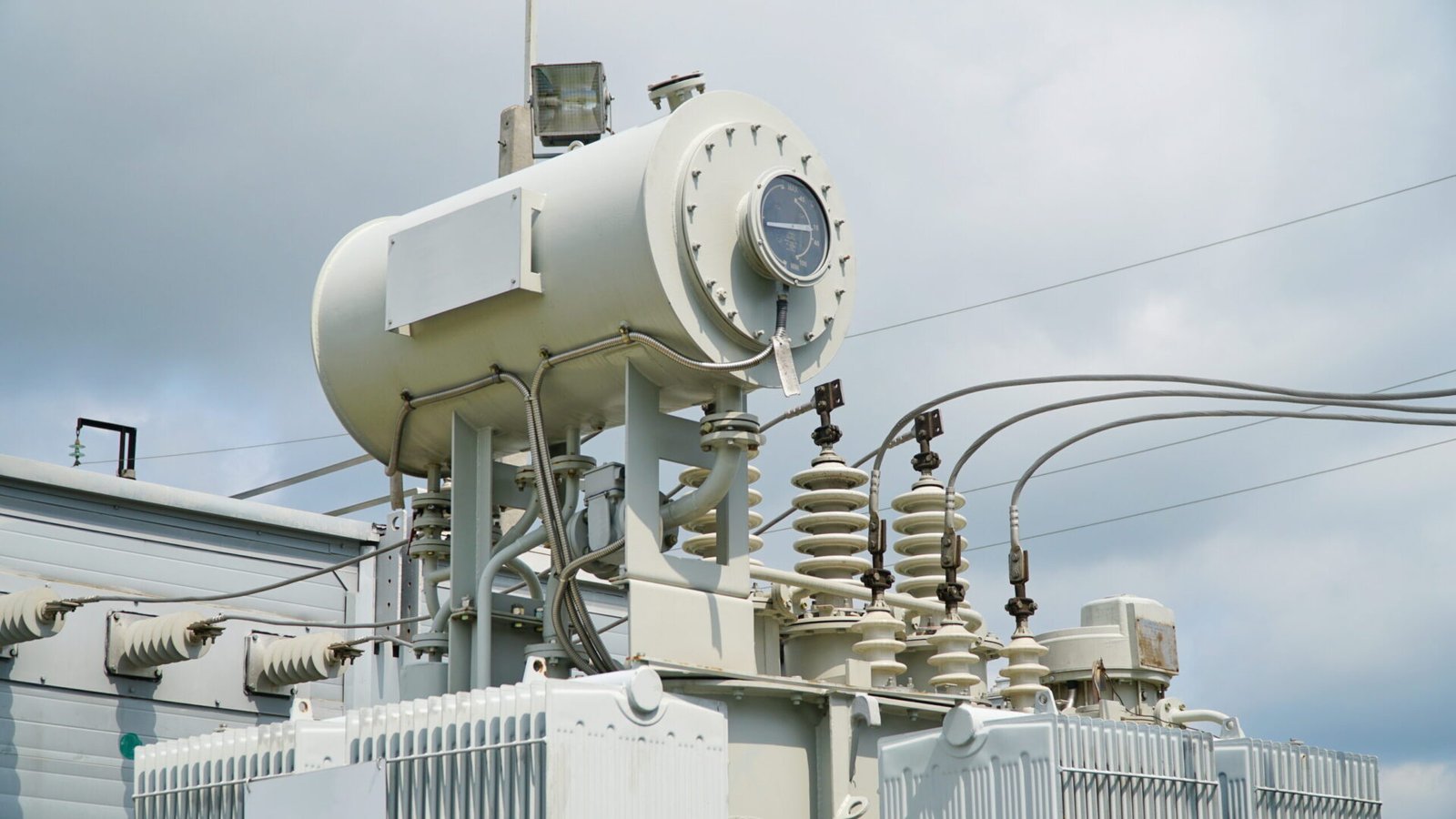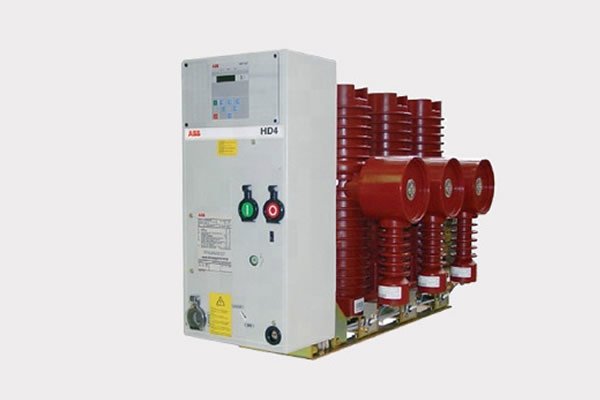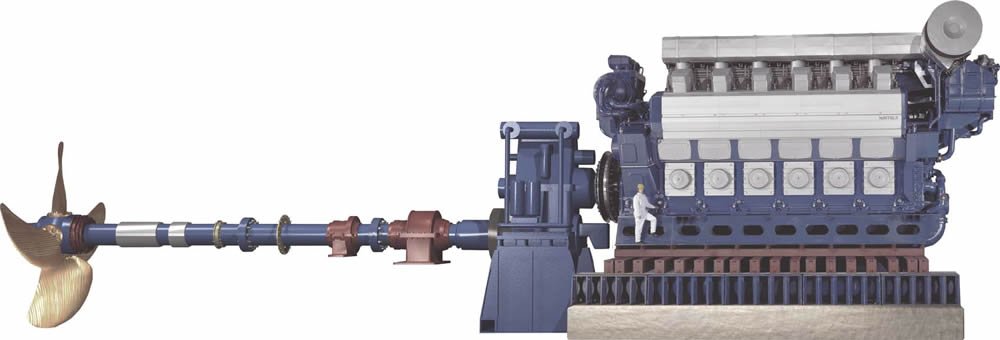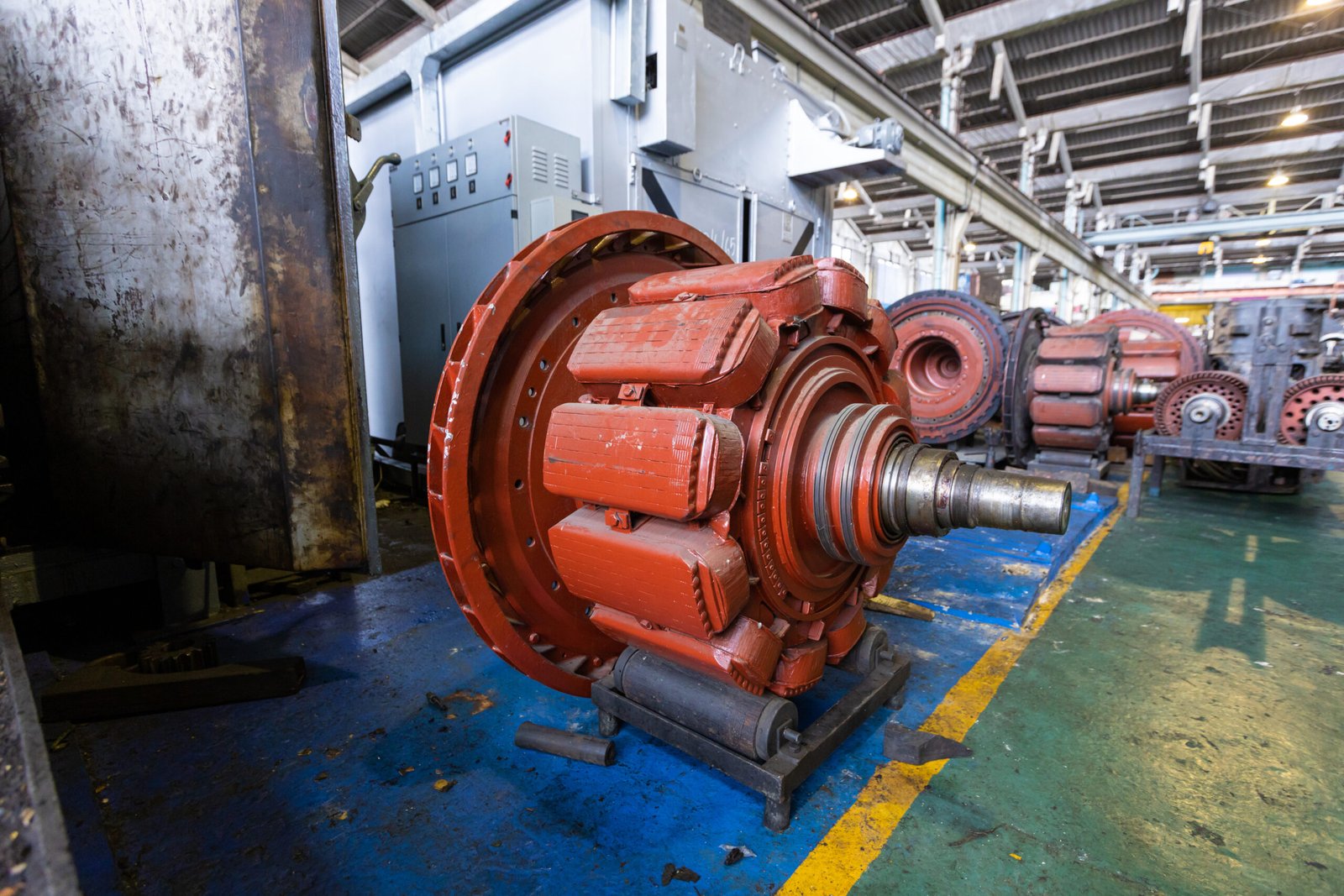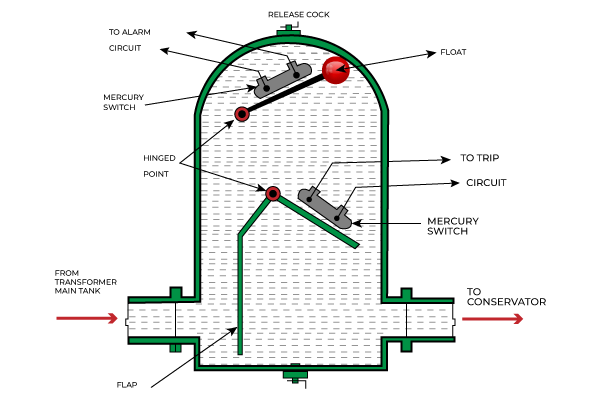I. Introduction
Compressors play a vital role in various industries and everyday applications, yet many people may not fully understand what they are used for. In simple terms, a compressor is a mechanical device that increases the pressure of a gas or air by reducing its volume. This increase in pressure allows compressors to power a wide range of tools and equipment, making them indispensable in industrial, commercial, and residential settings.
Compressors come in different types and sizes, each designed for specific tasks and environments. From pneumatic tools in manufacturing plants to air conditioning systems in homes, compressors are versatile machines with numerous applications. In this article, we will explore the functions, types, applications, and benefits of compressors, shedding light on their importance in various fields.
II. Understanding Compressors
Definition and Function
At its core, a compressor is a mechanical device that converts power from an external source, such as an electric motor or diesel engine, into potential energy stored in pressurized air or gas. This pressurized air or gas can then be used to perform work, such as powering tools or generating mechanical motion.
How Compressors Work
The operation of a compressor involves several key components working together. When the compressor is activated, the motor or engine drives a piston, rotor, or impeller, depending on the type of compressor. As this component moves, it reduces the volume of the air or gas, thereby increasing its pressure. The compressed air or gas is then stored in a tank or released directly into a system for use.
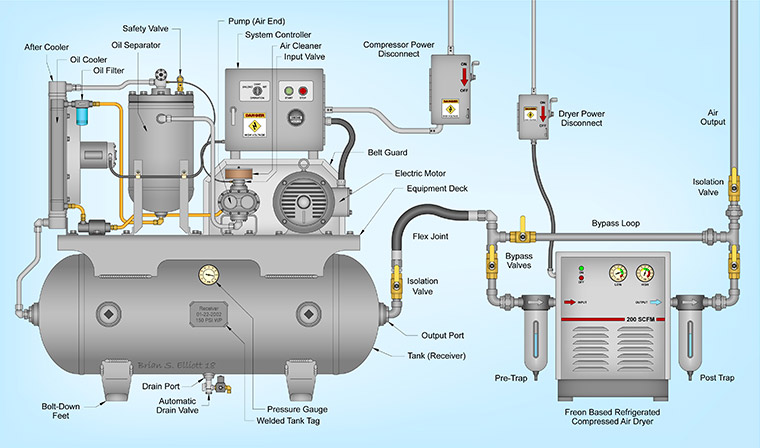 Compressor Working Diagram (Credit: https://www.maintworld.com/)
Compressor Working Diagram (Credit: https://www.maintworld.com/)
Components of a Compressor
Compressors typically consist of a motor, pump, tank, pressure regulator, and various valves and gauges. The motor provides the necessary power to drive the pump, which compresses the air or gas. The tank acts as a reservoir for storing the compressed air or gas, while the pressure regulator controls the output pressure to match the requirements of the application.
Here’s a breakdown of the main components:
| Component | Description |
|---|---|
| Motor | Provides the power needed to operate the compressor |
| Pump | Mechanism that compresses the air or gas |
| Tank | Stores the compressed air or gas for future use |
| Pressure Regulator | Controls the pressure level of the output air or gas |
| Valves and Gauges | Manage and monitor the flow and pressure of the air or gas |
III. Types of Compressors
Reciprocating Compressors
Reciprocating compressors, also known as piston compressors, use pistons driven by a crankshaft to compress air or gas. These compressors are commonly used in applications requiring high pressures and low flow rates, such as pneumatic tools and small air conditioning systems. They are widely used in industries where intermittent use is common.
Applications:
- Pneumatic Tools: Drills, hammers, wrenches, and other tools in construction and automotive repair.
- HVAC Systems: Providing compressed air for heating, ventilation, and air conditioning systems.
- Refrigeration: Essential in cooling systems for residential and commercial refrigerators.
Pros:
- High-pressure capability
- Suitable for intermittent operation
- Versatile for various applications
Cons:
- Noisier compared to other types
- Higher maintenance due to moving parts
Rotary Screw Compressors
Rotary screw compressors feature two interlocking helical rotors that compress air or gas as they rotate. These compressors are known for their reliability, efficiency, and quiet operation, making them ideal for continuous-duty applications in industries such as manufacturing and automotive.
Applications:
- Manufacturing: Providing consistent compressed air for assembly lines and machinery.
- Automotive: Used in paint booths and air tools in auto repair shops.
- Food and Beverage: Essential for bottling, packaging, and processing operations.
Pros:
- Continuous operation capability
- Low noise levels
- High efficiency
Cons:
- Higher initial cost
- Requires clean, dry air to avoid damage
Centrifugal Compressors
Centrifugal compressors use a rotating impeller to accelerate air or gas and then convert its kinetic energy into pressure energy. These compressors are capable of delivering high flow rates at relatively low pressures, making them suitable for large-scale industrial processes such as gas pipelines and petrochemical plants.
Applications:
- Gas Pipelines: Moving natural gas through pipelines over long distances.
- Petrochemical Plants: Providing air for chemical reactions and processes.
- Power Generation: Used in gas turbines to generate electricity.
Pros:
- High flow rate capability
- Efficient for large-scale applications
- Low maintenance
Cons:
- Not suitable for high-pressure applications
- Requires stable operating conditions
IV. Applications of Compressors
Industrial Applications
In the industrial sector, compressors are used for a wide range of tasks, including powering pneumatic tools, controlling industrial processes, and providing compressed air for equipment operation. Industries such as manufacturing, construction, and agriculture rely heavily on compressors to increase productivity and efficiency.
Manufacturing
Compressors are integral to manufacturing processes, providing the necessary power for assembly lines, robotic machinery, and pneumatic tools. For example, in a car manufacturing plant, compressors drive the assembly robots and tools that put together car parts efficiently and precisely.
Construction
In construction, compressors power heavy-duty pneumatic tools like jackhammers, nail guns, and sandblasters. These tools are essential for tasks that require precision and force, such as demolishing structures or installing high-strength fasteners.
Agriculture
Farmers use compressors to power irrigation systems, operate dairy
machinery, and run ventilation systems in barns. Compressors also play a role in powering tools for maintenance and repair tasks on the farm.
Commercial Applications
Commercial establishments utilize compressors in various applications, including refrigeration systems, air conditioning units, and air brakes for vehicles. Compressors play a crucial role in maintaining temperature control, ensuring food safety, and enhancing comfort in commercial buildings and transportation vehicles.
Refrigeration
Compressors are at the heart of refrigeration systems used in supermarkets, restaurants, and food processing plants. They ensure that food products are kept at optimal temperatures, preventing spoilage and maintaining food safety standards.
- Supermarkets: Large-scale refrigeration units powered by compressors keep perishable goods fresh.
- Restaurants: Commercial kitchens rely on compressors to maintain the integrity of ingredients.
- Food Processing Plants: Essential for cold storage and transportation of food products.
Air Conditioning
Commercial buildings, including offices, malls, and hospitals, rely on large-scale air conditioning systems powered by compressors. These systems provide a comfortable indoor environment by regulating temperature and humidity levels.
- Offices: Maintaining a comfortable workspace for employees.
- Malls: Ensuring a pleasant shopping experience.
- Hospitals: Critical for maintaining controlled environments for patient care.
Transportation
In the transportation industry, compressors are used in air brake systems for buses, trucks, and trains. These systems ensure reliable braking performance, enhancing safety for passengers and cargo.
- Buses and Trucks: Air brake systems powered by compressors ensure safety on the roads.
- Trains: Reliable braking systems are critical for passenger and freight trains.
Residential Applications
In residential settings, compressors power household appliances such as refrigerators, air conditioners, and air compressors for DIY projects. These appliances rely on compressed air or gas to function efficiently, providing convenience and comfort to homeowners.
Household Appliances
Refrigerators and freezers use compressors to keep food items fresh by maintaining a consistent cold temperature. Air conditioners also rely on compressors to cool indoor air during hot weather, providing a comfortable living environment.
- Refrigerators and Freezers: Essential for preserving food.
- Air Conditioners: Provide cooling for homes during warm weather.
Home Improvement
Homeowners use portable air compressors for a variety of DIY projects, such as inflating tires, painting, and operating pneumatic tools like nail guns and staplers. These compressors offer convenience and versatility for home maintenance and improvement tasks.
- Inflating Tires: Portable compressors can easily inflate car, bike, and sports equipment tires.
- Painting: Air compressors are used with paint sprayers for smooth, even coats.
- Pneumatic Tools: Tools like nail guns and staplers are powered by air compressors for home improvement projects.
V. Benefits of Using Compressors
Increased Efficiency
Compressors improve efficiency by providing a reliable source of compressed air or gas for various applications. By automating tasks and reducing manual labor, compressors help businesses save time and resources, leading to increased productivity and profitability.
Automation and Productivity
In manufacturing, compressors power robotic systems that automate repetitive tasks, reducing the need for manual labor and increasing output. This automation allows companies to produce goods faster and with higher precision.
- Robotic Assembly Lines: Enhance production speed and accuracy.
- Pneumatic Tools: Increase efficiency in various industrial applications.
Energy Savings
Modern compressors are designed to be energy-efficient, consuming less power while delivering high performance. This efficiency translates to cost savings for businesses, as lower energy consumption results in reduced operational expenses.
- Variable Speed Drives: Adjust the compressor’s speed to match the demand, reducing energy waste.
- Energy-Efficient Models: Use advanced technologies to minimize energy consumption.
Versatility
Compressors can be adapted for a wide range of tasks and environments, making them versatile tools in various industries. Whether it’s powering pneumatic tools on a construction site or inflating tires at a gas station, compressors offer flexibility and convenience in different applications.
Adjustable Pressure Levels
Many compressors come with adjustable pressure settings, allowing users to customize the pressure output to suit specific tasks. This flexibility ensures that the compressor can handle a variety of jobs, from delicate tasks requiring low pressure to heavy-duty applications needing high pressure.
- Customizable Settings: Users can adjust the pressure to match their specific needs.
- Wide Range of Applications: Suitable for both light and heavy-duty tasks.
Portability
Portable compressors are available for both professional and DIY use, offering mobility and convenience. These compressors can be easily transported to different job sites, providing on-the-go power for tools and equipment.
- Compact and Lightweight: Easy to move and transport.
- On-the-Go Power: Ideal for mobile repair services and construction sites.
Environmental Impact
Compared to traditional power sources such as fossil fuels, compressors offer a more environmentally friendly alternative for powering equipment and machinery. By reducing emissions and minimizing waste, compressors contribute to a cleaner and more sustainable future.
Reduced Emissions
Electric compressors produce fewer emissions compared to gasoline or diesel-powered equipment. This reduction in emissions helps decrease the environmental footprint of industrial and commercial operations, contributing to better air quality and lower greenhouse gas levels.
- Electric Models: Produce less pollution and are more environmentally friendly.
- Cleaner Operations: Reduce the overall environmental impact of industrial activities.
Sustainable Practices
Using compressors in conjunction with renewable energy sources, such as solar or wind power, further enhances their environmental benefits. By integrating compressors with sustainable energy solutions, businesses can reduce their reliance on fossil fuels and promote greener practices.
- Renewable Energy Integration: Pairing compressors with solar or wind power systems.
- Sustainable Operations: Reduce dependency on non-renewable energy sources.
VI. Maintenance and Safety Tips
Regular Maintenance
To ensure optimal performance and longevity, compressors require regular maintenance, including oil changes, filter replacements, and system inspections. By following a routine maintenance schedule, users can prevent costly breakdowns and prolong the life of their compressors.
Maintenance Checklist
- Oil Changes: Regularly check and change the compressor oil to keep the internal components lubricated and running smoothly.
- Filter Replacements: Replace air filters to prevent contaminants from entering the system and causing damage.
- Inspections: Conduct routine inspections to identify and address potential issues before they become major problems.
| Maintenance Task | Frequency | Purpose |
|---|---|---|
| Oil Change | Every 500-1000 hours | Ensure smooth operation and longevity |
| Air Filter Replacement | Every 3-6 months | Prevent contaminants from damaging the compressor |
| System Inspection | Monthly | Identify potential issues early |
Safety Precautions
Proper safety measures are crucial when operating compressors to prevent accidents and injuries. Users should follow manufacturer guidelines and best practices to ensure safe operation.
Safety Guidelines
- Read the Manual: Familiarize yourself with the compressor’s manual and follow the manufacturer’s instructions.
- Wear Protective Gear: Use safety glasses, ear protection, and gloves when operating a compressor.
- Check for Leaks: Regularly inspect hoses and connections for leaks and fix any issues immediately.
- Secure the Area: Ensure the work area is clean and free of obstructions to avoid tripping hazards.
- Avoid Overloading: Do not exceed the compressor’s recommended pressure limits to prevent equipment damage and safety risks.
Common Issues and Troubleshooting
Even with regular maintenance, compressors can encounter problems. Understanding common issues and how to troubleshoot them can help keep the compressor running smoothly.
Common Problems
- Overheating: Caused by inadequate ventilation or excessive use. Ensure proper airflow and take breaks during extended use.
- Air Leaks: Check hoses, connections, and seals regularly to prevent air loss.
- Low Pressure: This can result from clogged filters or worn-out components. Replace filters and inspect for worn parts.
Troubleshooting Tips
- Check Air Filters: Replace clogged or dirty filters to restore proper airflow.
- Inspect Seals and Hoses: Look for cracks or damage and replace if necessary.
- Monitor Oil Levels: Ensure the oil is at the correct level and replace if dirty or low.
VII. Conclusion
Compressors are essential tools with a wide range of applications across various industries and residential settings. Understanding their types, functions, and benefits helps us appreciate their versatility and importance. Regular maintenance and adherence to safety guidelines ensure their optimal performance and longevity. Whether for industrial, commercial, or home use, compressors play a crucial role in powering tools and equipment, enhancing efficiency, and contributing to a sustainable future.
For more information on specific compressor models and their applications, check out example.com. Additionally, visit our internal resources on Pneumatic Tools and HVAC Systems to explore related topics.
By integrating compressors into various applications, industries can achieve higher productivity, better efficiency, and a reduced environmental footprint, making compressors indispensable in modern technology and everyday life.

